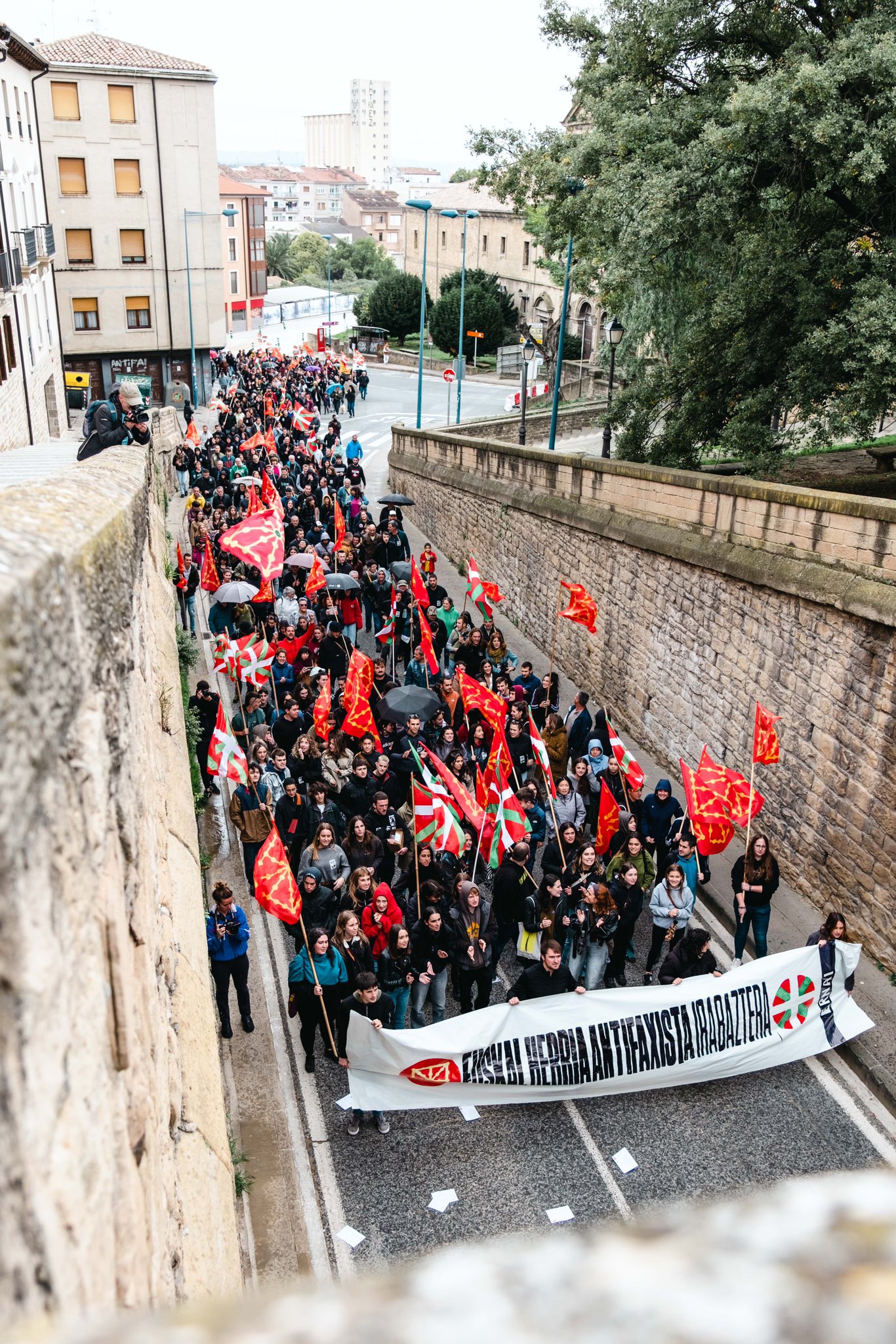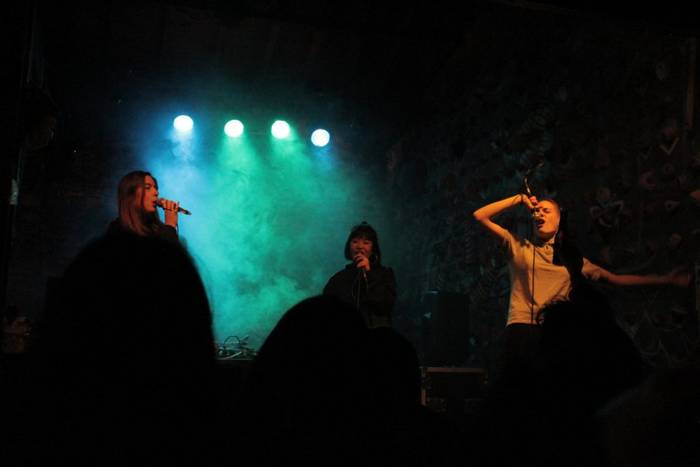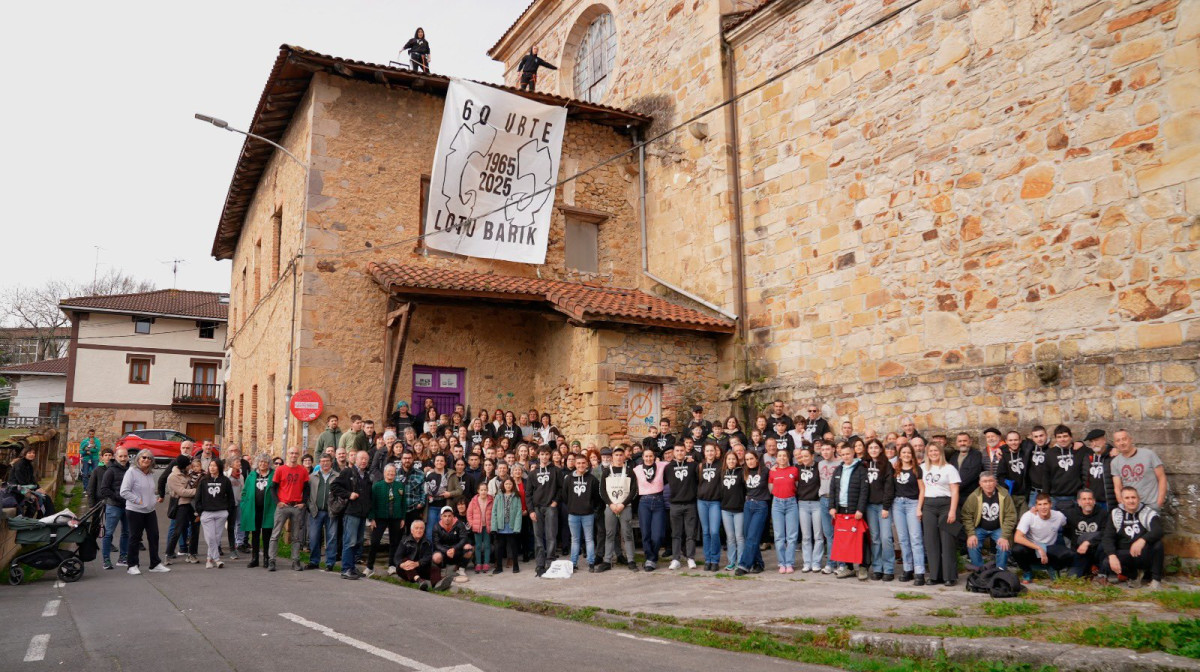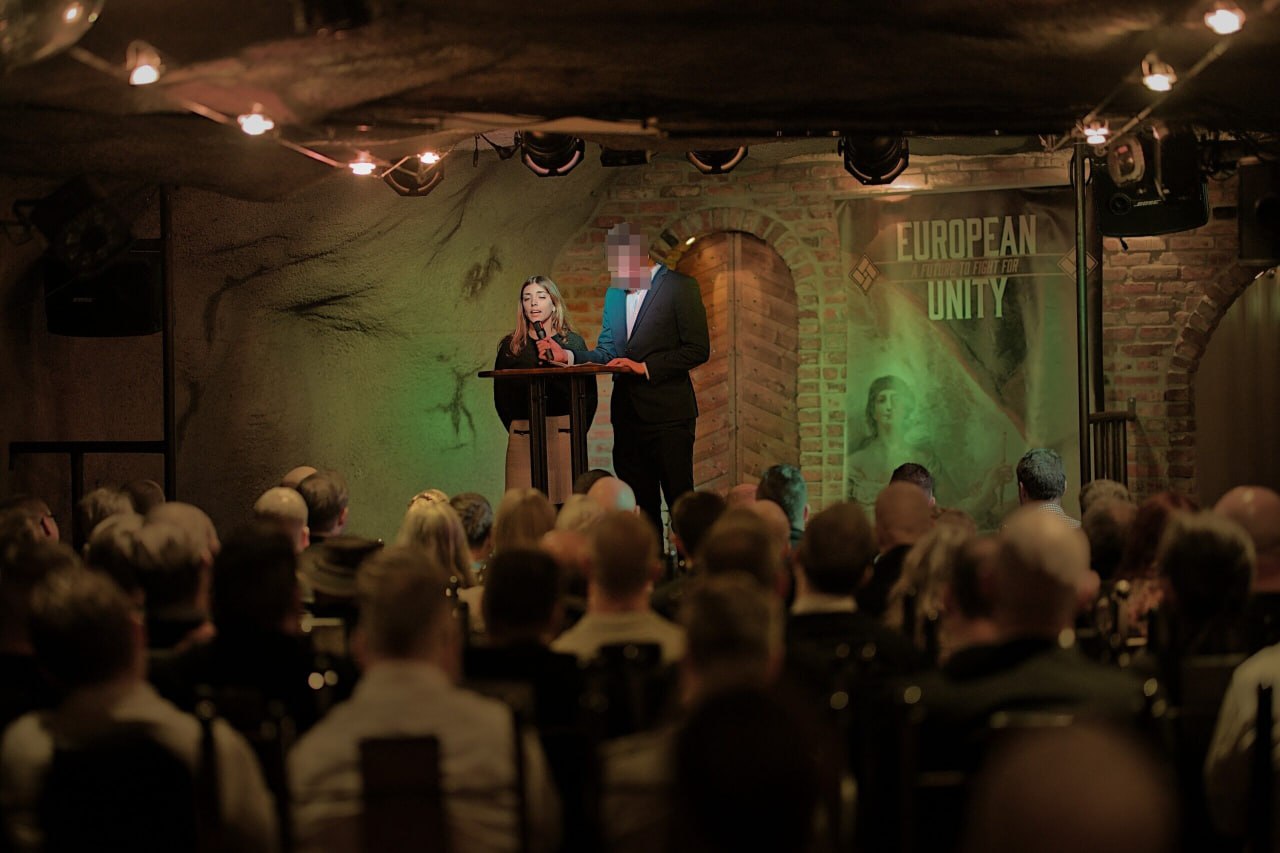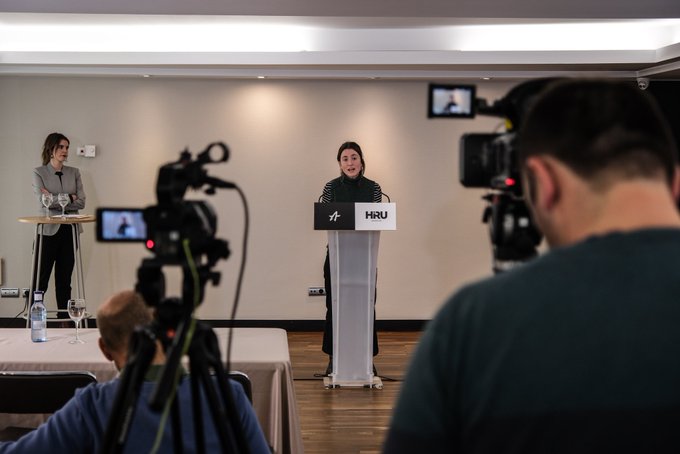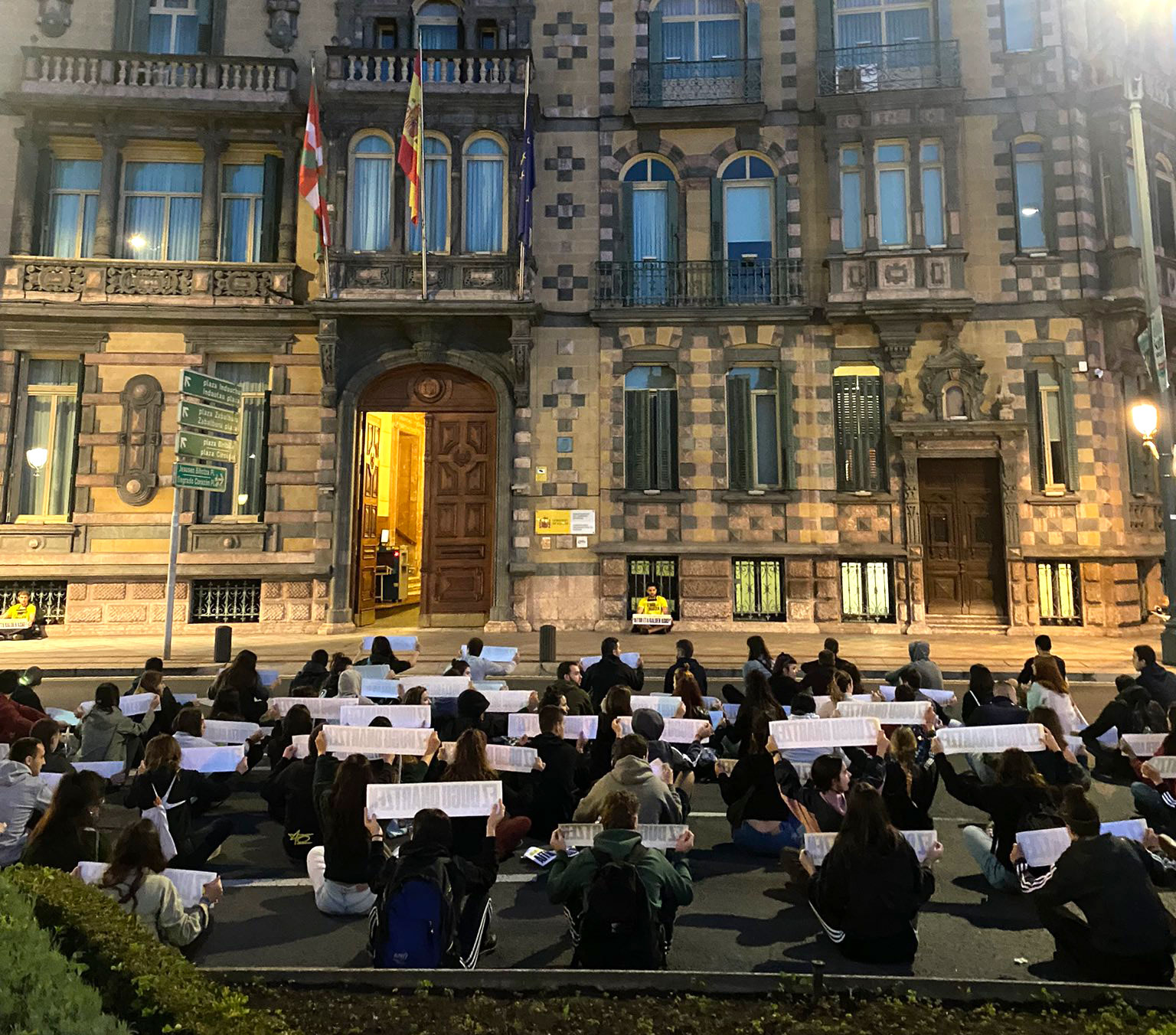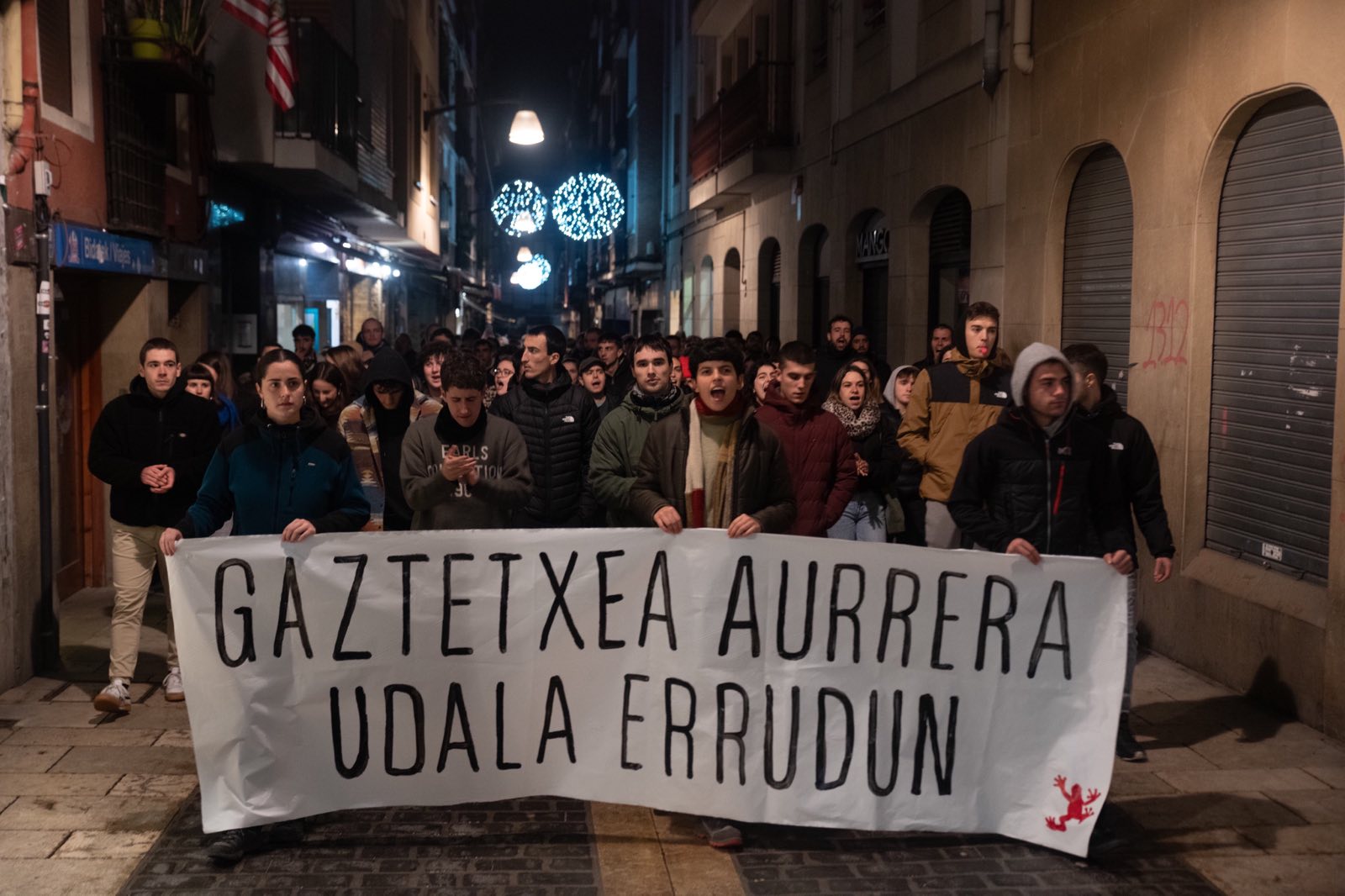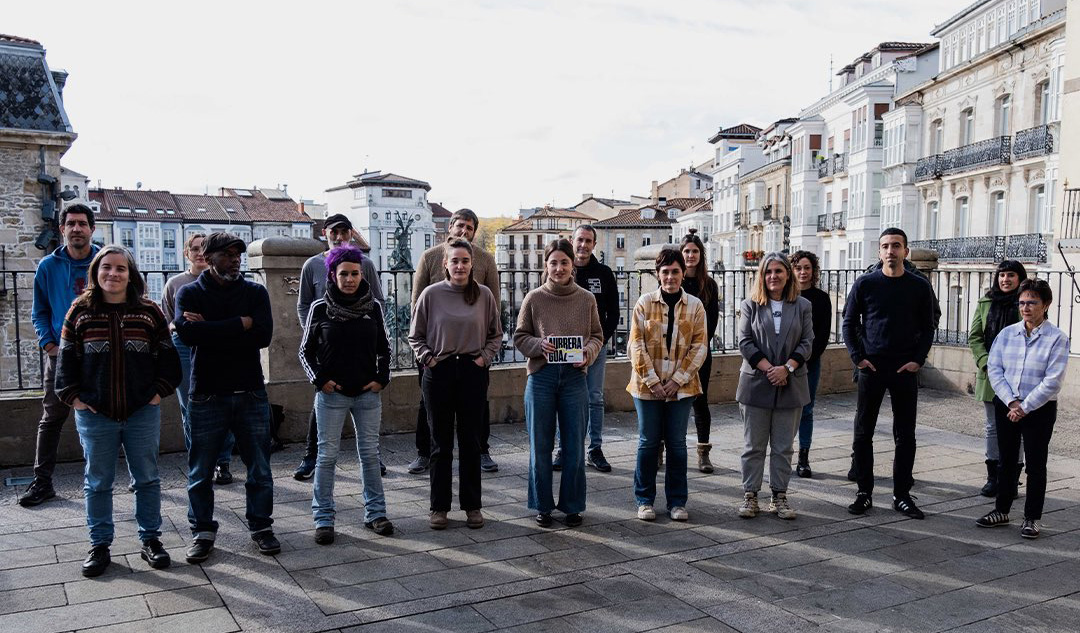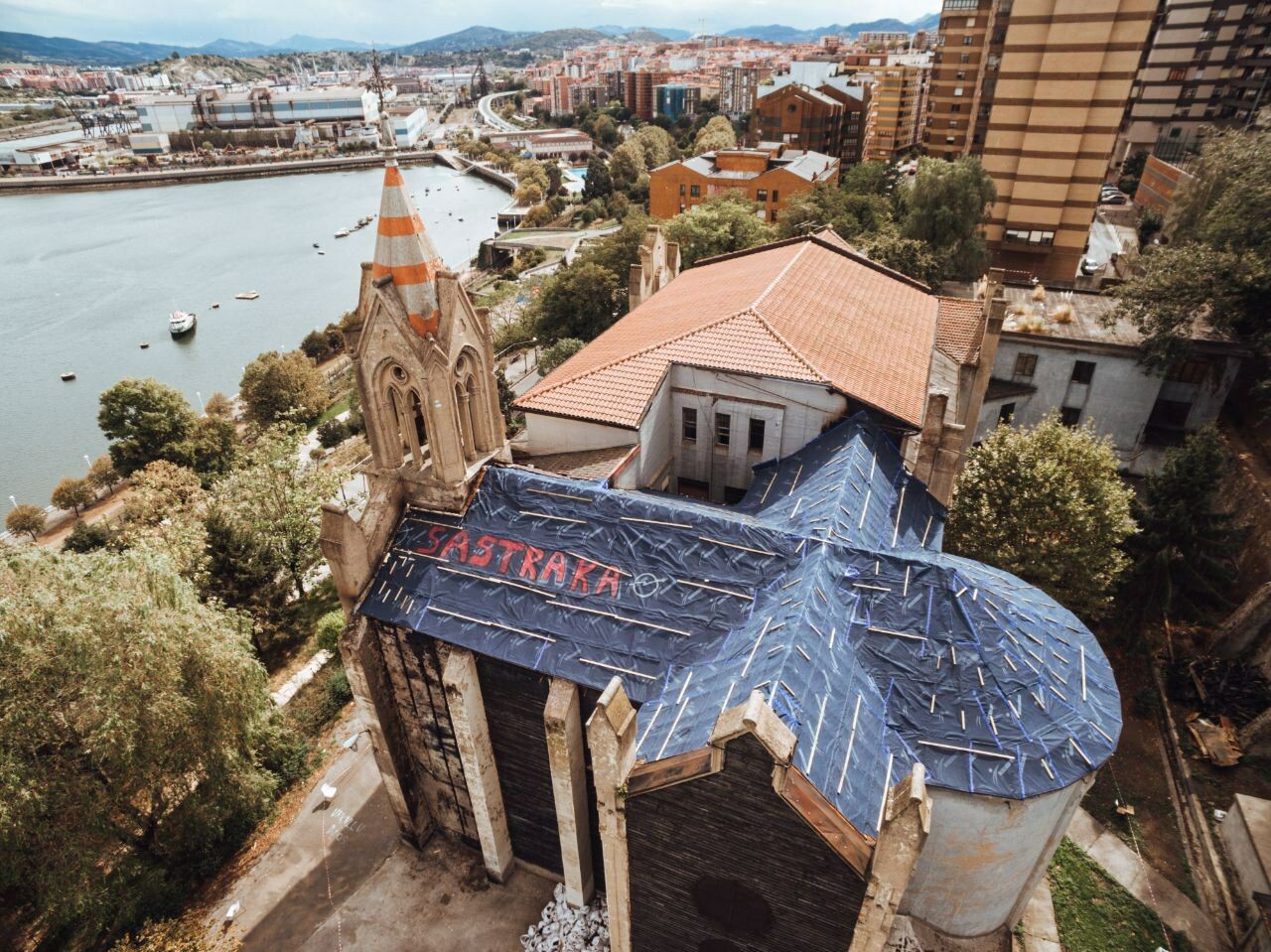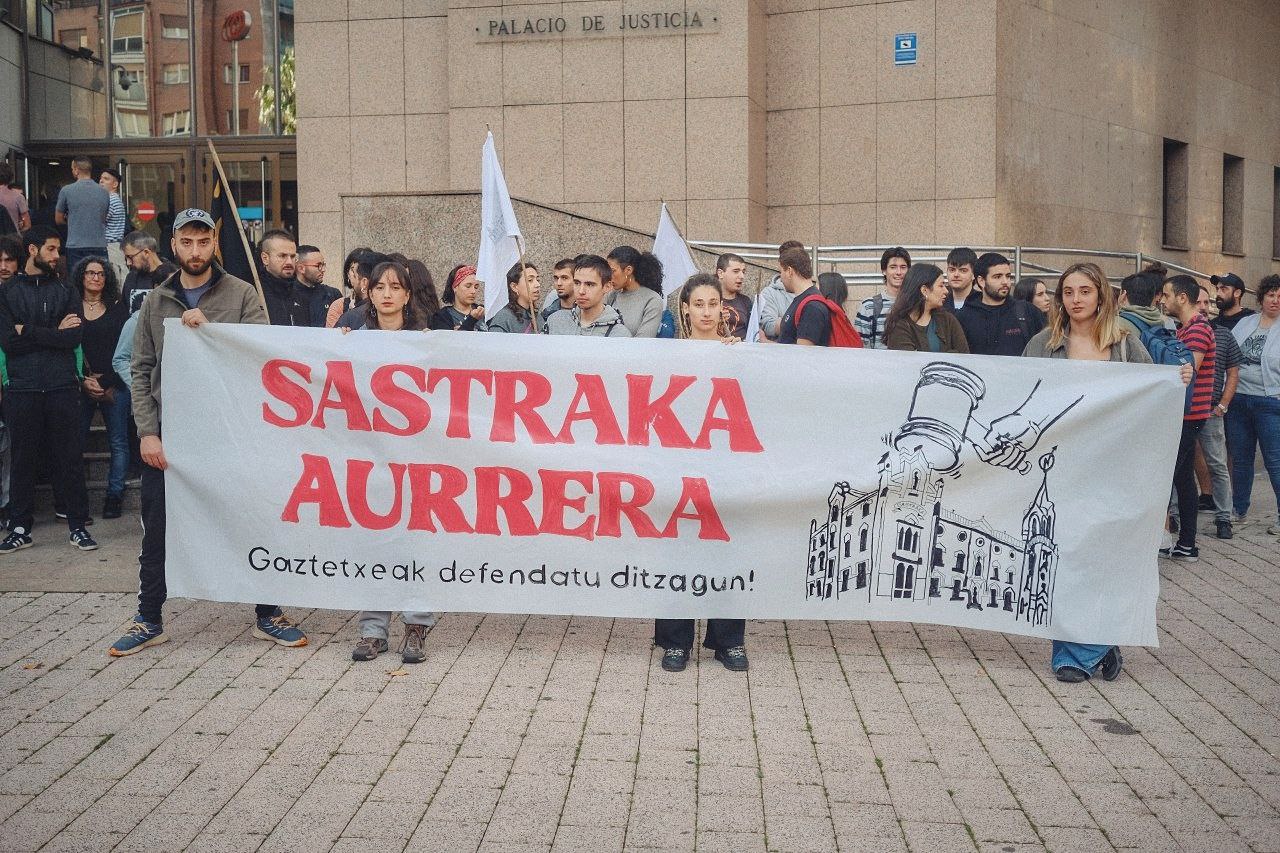40 years from Jarrai to Ernai and Aitzina
- Eduardo Galeano reported a ceremony between the native peoples of the north-west of America. The potter who goes to the toilet gives his work as a teacher to the young man studying the trade. And the young potter doesn't keep that perfect spacecraft to look at and admire it, but he crushes it against the earth, smashes it into a thousand pieces, lifts the pieces and binds them to his clay.
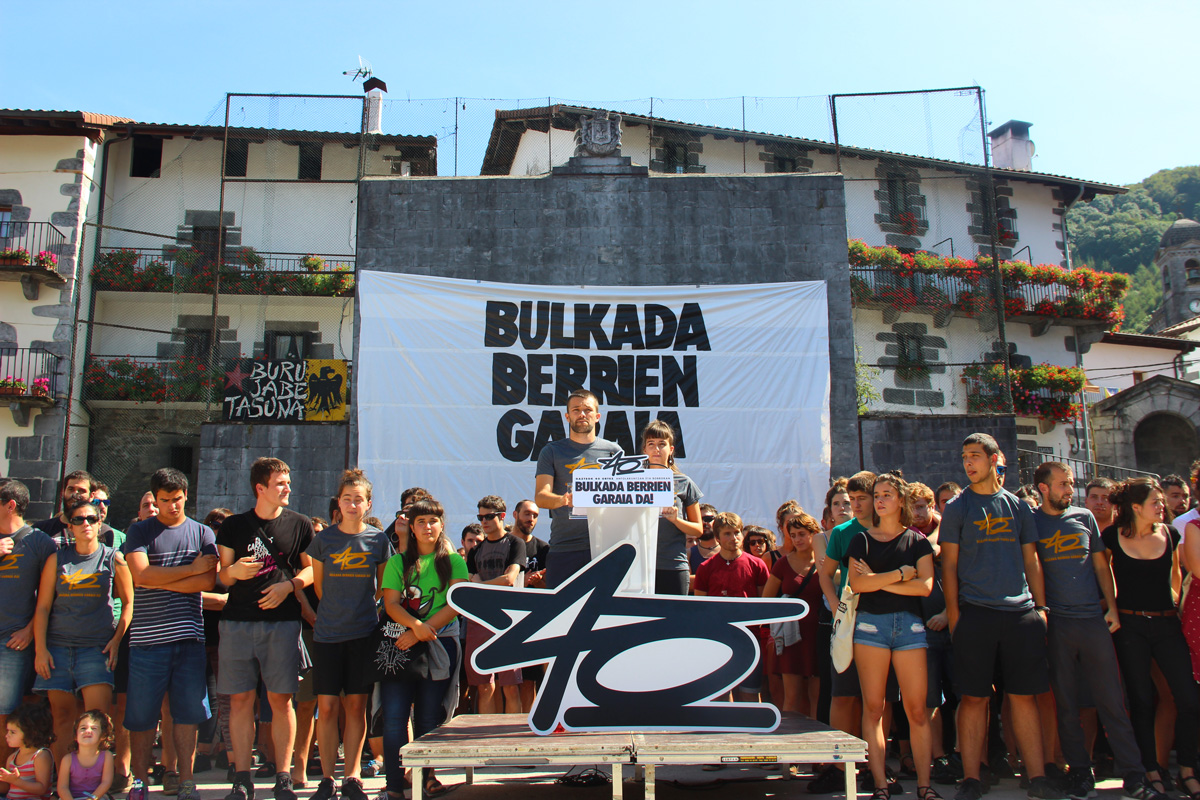
Coinciding with the 40th anniversary of the creation of the youth organization Jarrai, Ernai started the dynamic of new impulses on 16 September in Leitza Jarrai, Haika, Segi and Ernai, with over 1,000 members and former members.
They've also created Galeano's metaphor to create the book-artifact that will be called the Young Memory Pot. As it corresponds to youth, the book has been created to make it a tool, and with its presentation in November it will work from people to people. In addition, for each district and village a white paper of the same name has been distributed “for each town to write its memory”, as explained by spokesman Aitor Orobio.
The book says: “Memory cannot be established by decree. Memory is elaborated, and that action or construction will be a shared responsibility. It places the individual in front of a mirror, as does the collective.”
At the time of collecting testimonies from different 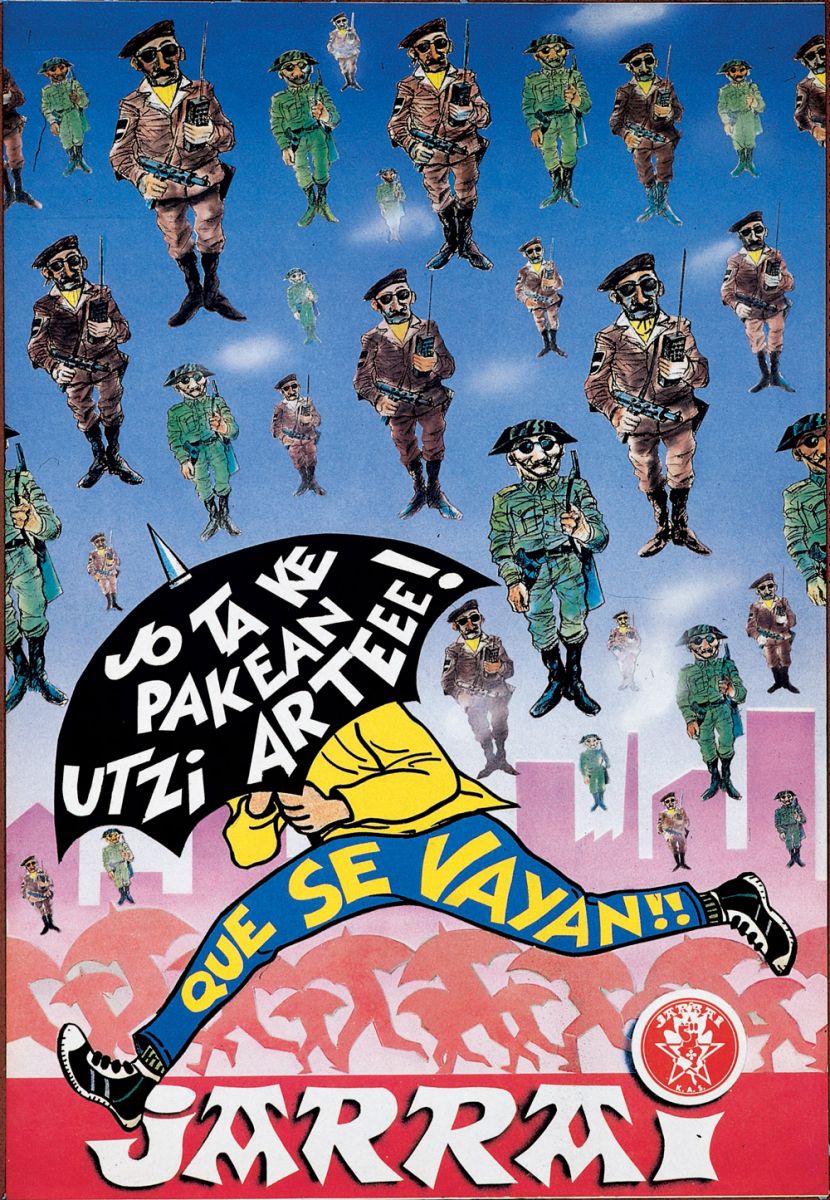 generations, in addition to documents, internal and external journals, afixes, stickers and stickers, several group interviews have been organized with the members of the time. “To be the protagonist of the book, it is not only he who has written it, but the story of the youth organization is formed by individual experiences.”
generations, in addition to documents, internal and external journals, afixes, stickers and stickers, several group interviews have been organized with the members of the time. “To be the protagonist of the book, it is not only he who has written it, but the story of the youth organization is formed by individual experiences.”
Irati Sienra worked in the working group to draft the book, adding another reason: “Most of the documents and debates of the era of illegalization are irretrievable. To recover that part of the story, it was necessary to join with the protagonists.”
It has been necessary to carry out this memory exercise, as transmission to the new generations has been cut continuously. Orobio makes it clear: “We want to learn from what we have done and update what has been done.” For this reason, all the conversations have attempted to address the current themes and debates, especially the militancy models and feminism and the participation of women in mixed organizations.
From the interviews conducted by Sienra, he highlights that youth organization has been a fundamental pillar in the construction of life and identity for all: “I’ve never felt part of something like this again,” “I’ve never discussed with such force again”...
Youth organizations have been an important part that does not appear in the history books of the Basque Country. Up to 4,000 people have joined the process of creating Haika, such as Amaiur, and there are currently about 1,000 members in Ernai and Aitzina, after the unions, one of the largest political organizations in Euskal Herria.
The youth organization Heldu has made a pot of pots. Years of experience and knowledge do not want to keep it in a museum, but will put it in the future. In the words of Orobio in Leitza: “We are nostalgic for the future.”

Irati Sienra Zengotitabengoa (Bilbao, 1990), a militant for years in various youth organizations, is currently working at the Ipar-Hegoa Foundation. In recent months he has worked in the working group to produce the book “Gazte oroeltza” to be published in November. With the last draft in hand, we've looked at the trajectory of youth organizations.
If it is to endure, any political subject must pass on his values and behaviour to the new generations. What are the most relevant values and cultures that the youth organization has left in its 40 years of development?
The main value has been the commitment of the Abertzale Left in the struggle for another model. It has been the youth organization that has strengthened its links with the political project of the Abertzale Left for generations. The youth organization has educated committed militants, but not only for the youth, but also people who will militate throughout their lives in different agents.
As for other values, youth militancy has also brought the status of workers, the development of the ability to work in different things, the overcoming of fears – which in the case of women had a specific weight – has offered a hidden curriculum to the majority of its members. Faced with tax values, working together, solidarity, concern for the needs of others, learning to dynamize, possibilities of changing glasses...

It is also possible to talk about the weight that the youth problem has had in the youth organization. Following us at the beginning was nothing more than a way of participating in the political conflict. But this issue was gaining central importance with the debate on the living conditions of the V and VI Congresses. In Haika, a comprehensive plan was developed to serve the youth movement, but it was cut off by repression, as it was in Segi.
You've spread the book in some marmites. The first pot refers to Jarrai. The attitude of Jarrai ' s soldier and the struggle for input have been the passages that have made history the most.
“Mili with the milis” was a motto, yes, but not even the followers wanted to go to mili. We have taken the first discussions and it is clear that everywhere Jarrai was against military service.
At one point, the speech changed because it clashed with KAS Alternatiba. However, it should not be understood as a clash between young people and adults, as they believed that Jarrai was part of a more complete movement and that they were doing it for the sake of it. Then the path of compromise was taken indicating “no to this soldier” and it became quite strong. Since most of the youth were very opposed, they didn't understand each other very well and they didn't do one.
When the struggle for insubordination arose, a new discourse began against the mili: it was not based on pacifism, but on rights. In the early 1990s, Jarrai assumed these demands after long discussions and created his own discourse: That armed struggle was a legitimate instrument for the right of self-determination of a people, but that this did not mean the need for a regular and professional army, which was an instrument of imposition.
“Mili with the milis” was a motto, yes, but not even the followers wanted to go to mili.
In the book, Maitane Intxaurraga tells how Kakitzat and MOC placed a lot of obstacles in the face of the possibility that Jarrai would take them to prominence. But it is true that the struggle took a qualitative leap, transforming that struggle. As a sign of their strength, they made an intractable march for Europe.
You've tried to put the militancy model in the middle. For example, Jarrai, for his part, has imposed the hard image of the organization, a picture view. What does it have of truth and myth? How has it changed?
We have tried to talk a lot in the book because the current debate is important: how the 24-hour militancy has been understood, for example. Many of the following participants are uncomfortable with reviews conducted in the past, as they consider that only some of their elements have been very rigorously judged. It is true that the concept of Jarrain’s compromise was very rigid – because the strategy was too –. But it has also been seen as something imposed by the organization, and all the militants said that it was they who took care of it. It has been highly criticized and they claim it from pride.
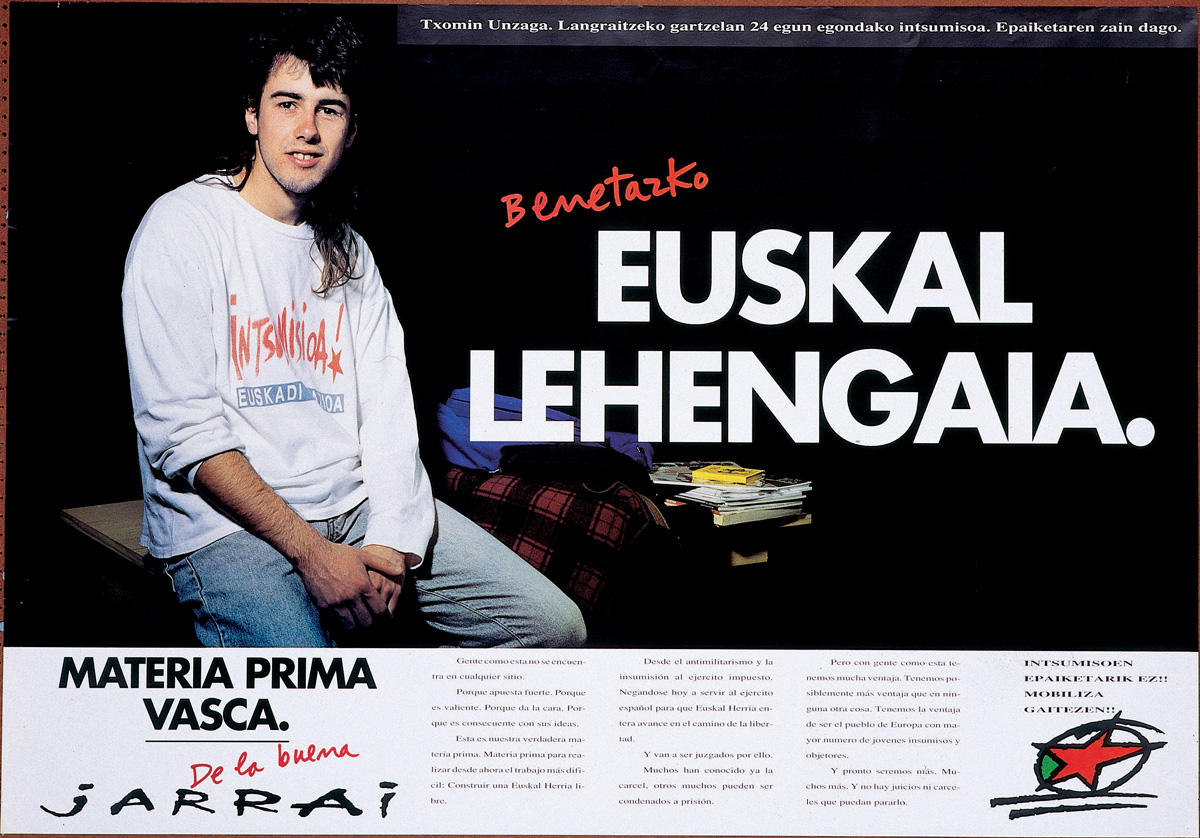
5. The main change in the political culture of the youth organization took place in Congress: “Invigorate the youth movement where it is and when it is not.” From the historical point of view, the change and leadership role they played in the Abertzale Left is evident.
All those of the time proudly mention it. In fact, the 4th edition of Jarraire. The Congress was a drama, as it was in full decline, and there were also those who said that in the Abertzale Left we had to create HB Gazteak, who still remember it with rage.
Placing the youth problem at the centre, the creation of a new Jarrai, another action and other lines of struggle was proposed. On the same day of Congress, they knew that they had achieved a more plural organization, seeing the differences of each group.
ETB was constantly seeking tickles from the members of Jarrai, who were engaged in taking advantage of the microphone offered to them. At a time when the Left Abertzale was sad, Joxi got a great deal of speculation on the subject.
He put at the heart of the National Construction strategy, as two years later the entire Abertzale Left did in the Txinaurri process. However, Jarrai is not considered to be the precursor of this...

The creation of Haika was the first national civil political organization in Euskal Herria. But there were a lot of crashes along the way. What was the process like?
The birth of Haika has been seen as a very logical reflection, but the reality was beautiful but conflictive – they remember it as a love story. Youth and Jarrai started organizing several initiatives starting in 1995. But they came from very different militant cultures. It followed “the haste and the great spectacular initiatives”. And in Iparralde, for lack of ability to show the muscle, they gave much more importance to the process.
Before Gazte Abialdia, there was a rumor of raids and Jarrai’s leadership decided to cross the border to live there for a few months. Then they began to understand that the realities were different and to value Iparralde's work model. Haika was the process of creating a new organization that would bring the best of the South with the best of the North. Their goal was a new militancy: not just nationality.
In Hegoalde, the process was especially noticeable in the direction, but having less militancy in Ipar Euskal Herria, having smaller structures, lived in a more open way and all received it. However, the raid on Haika’s creation truncated what was learned and it was difficult to develop it. Remember that the process was very nice but very personal.
.jpg)
Segi's life is that of prison, torture and illegalization. You collect several anecdotes of living in a clandestine civil institution. For the first time, I've been able to read these things. In the illegalization, Segi has had its evolution, both in theorization and in practice. How did the members of the time experience this?
At first we did not want to focus repression, but in the end it has been the life of the organisation, it has passed through people’s daily lives and it has had very clear consequences.
Ahotsa.info or Topatu have done incredible work collecting torture or prison experiences. In addition to collecting them, we wanted to work underground: how we have been normalizing and making certain behaviors darker and darker from the idea of security. For example, not telling anyone anything – “I have to do a mobida” – never explaining who you’ve been with, not telling anything about the militancy, to leave the technologies out of life, what you could count and not, and therefore everything became very opaque.
The members who participated in the session we organised never spoke about the issue and there is already that need. It's the reality of a whole generation. It is also the case of those who have not suffered repression. There is no talk of the influence of torture on the partner who has not tortured her, but she does. These conclusions should be dealt with and observed at some point. If you don't talk, you can't cure it.
We wanted to talk more about repression, as we have said, because Segi has been a very important organization. In the most complicated situation, it has not surrendered and has always tried to revive the youth movement. Until the last moment “we need another tool because this is not worth it”, it never stops creating.
There is talk of Sarrionandia, of the need to take distance in order to maintain a critical view. Is there enough to talk about this fifth pot? What can be the passages that go into our unofficial history?
I am too early to speak. To speak sincerely and to value the results he has given. As in the last years of Segi, in the change of strategy.
In these times, as a result of new technologies, a lot is happening, some of the pulp and some of it is not, it takes time and distance to see.
"The Askegunes have taken a great deal of weight, because they have particularly marked us, but it is too early to say whether they have had a real way in the life of Euskal Herria, and even of the organization"
In any case for me is Ernai, a synthesis of all youth organizations. At the very least, it has tried to collect all kinds of debates and practices. But as we have said, it cannot be assessed. For example, the Askegunes have taken a great deal of weight, because they have marked us especially, but it is too early to say that they have had a real way in the life of Euskal Herria, and even of the organization.
Ernai has been the youth organization that has given more importance to feminism. How has this change been experienced in relation to the previous ollas?
It is clear that with Ernain’s feminism a giant leap has been made compared to the previous ones. Jarrai’s early women say they were not considered feminists despite working in the field of women. The dissolution of Egud will start to involve the women of Jarrai and there will be important changes.
In the feminist process launched by the Left Abertzale, Segi assumes a great commitment, unfortunately, the repression is again trimming it. As for Segi, there is a job that is not recognized, because it is the one that creates the conditions.
Larrabetzuko Hori Bai Gaztetxeak 60 urte bete ditu. Euskal Herriko Gaztetxe zaharrena da Larrabetzukoa.
Gasteizko Auzitegiko laugarren aretoak ebatzi du Gasteizko isunak bertan behera uztea, eta Bilboko isun batzuk 2.500 eurotik 1.800era murriztea, "gehiegikeria" egon zela argudiatuta. Ernairen arabera, Segurtasun Sailak "arbitrariotasunez" eta... [+]
Pasa den urriaren 30ean, Portugaleteko Sastraka Gaztetxeko bederatzi lagun auzipetu zituzten. Handik egun batzuetara Portugaleteko kaleak hartu zituzten hainbat lagunek gaztetxearen defentsan. Bi egun geroago, fiskalak karguak kendu zituen.













